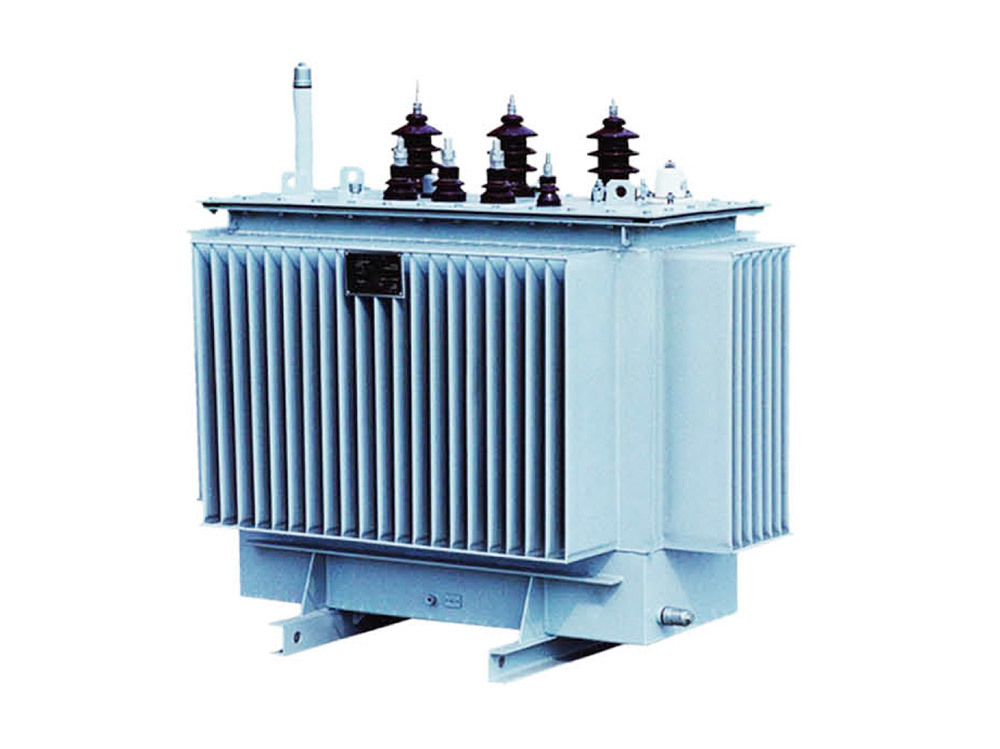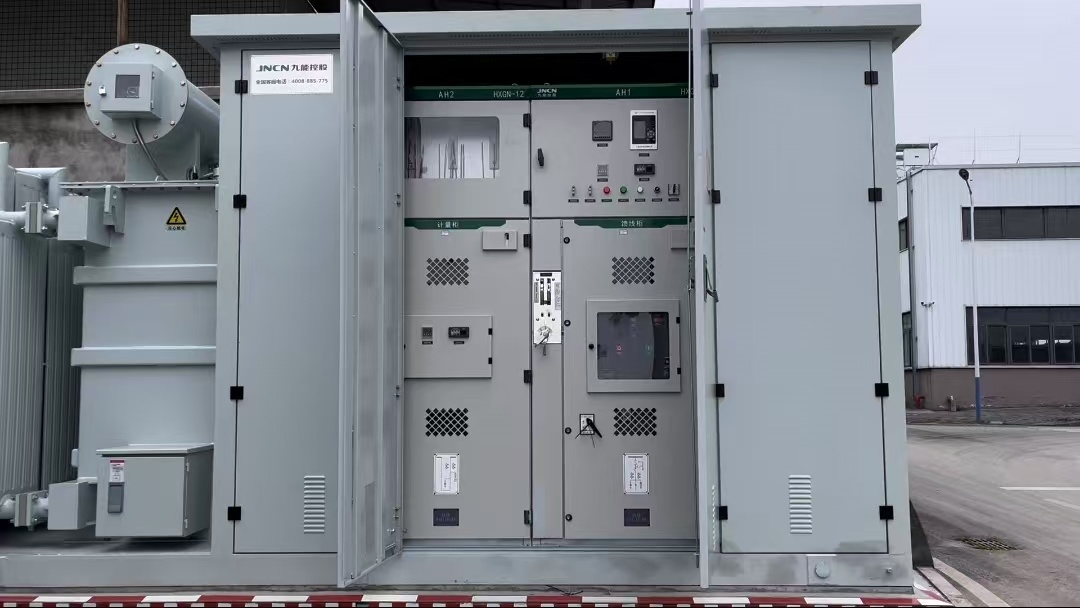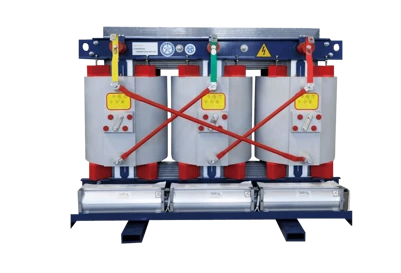27
2019
-
09
Why do distribution power transformers burn? Where are some preventive measures?
Author:
Distribution transformer burned distribution transformer burned in the power supply are relatively common equipment accidents. The causes of its burning can be summarized into five categories: first, lightning overvoltage; Second, low-voltage short circuit; Third, the distribution transformer overload; Fourth, the cable and distribution transformer do not match; Fifth, the control box capacity and distribution transformer capacity are not matched.
Causes of distribution transformer burning
Distribution transformer burning is a common equipment accident in each power supply station, and the causes of the burning can be summarized as followsFive categories:
One is the lightning overvoltage;
Second, low voltage short circuit;
Three is the distribution transformer overload;
Fourth, the cable and the distribution transformer do not match;
Five is the control box capacity and distribution capacity is not matched.
Through the field test and technical analysis of the burned distribution transformer, the following reasons are obtained.
1. Distribution transformer protection configuration is not appropriate
There are no fuses on the high and low voltage sides of the distribution transformer. Although some drop fuses are installed, aluminum or copper wires are used to replace the fuse, resulting in low-voltage short circuit or overload. The fuse cannot be blown normally and the distribution transformer is burned. The high and low voltage melt configuration capacity of the distribution transformer is too large, which causes the distribution transformer to burn when the distribution transformer is seriously overloaded.
2. Load management is not in place
Due to the current electricity category, most customers use single-phase power supply. With the improvement of people's living standards, the increase of household appliances. In particular, the number of induction cookers, soybean milk machines and electric cake pans has increased, and the electricity consumption time is relatively concentrated, as well as the randomness and inadequate management of power connection during construction, resulting in unbalanced load of distribution transformers and burning of a phase winding insulation due to long-term operation.
3. Aging of insulation rubber pad
Due to the distribution transformer in the insulation rubber beads, rubber pad aging cracking caused by oil leakage, long-term operation led to the insulation after the performance of the damp and discharge short circuit, burning distribution transformer.
4. Overvoltage
Most of the high and low voltage lines of distribution transformers are introduced from overhead lines. Due to the fact that the lightning arrester is not put into operation in time or is not installed with 10 kV lightning arrester and low voltage lightning arrester, as well as the phenomenon that the grounding resistance value of lightning arrester is unqualified, the distribution transformer is burned down by overvoltage during lightning strike.
5. General protector
Some distribution transformers are not equipped with a first-level residual current action protector (leakage protector), or although the first-level protection is configured to withdraw from operation manually, or the fault caused by wiring error cannot be tripped. When the low-voltage side of the distribution transformer is grounded and short-circuited between phases, the short-circuit current that is 20 to 30 times higher than the rated current will act on the high-voltage winding, and high temperature and great mechanical stress will be generated inside the winding. This mechanical stress will lead to winding compression. After the short-circuit fault is relieved, the stress also disappears. If the winding is repeatedly subjected to mechanical stress, its insulating rubber beads, rubber pads, etc. will loosen and fall off; the iron core splint bolts will also loosen, and the high-voltage winding will distort or crack, which will cause the distribution transformer to burn in a very short time.
6. Overload
With the development of economy, the people's living standard is improved. The power load of some stations increases rapidly in a short period of time, but the corresponding distribution transformers and power distribution cabinets are not increased in time, resulting in the burning of distribution transformers due to long-term overload operation.
7, not in accordance with the requirements of the regular test
The grounding resistance value of distribution transformer and grounding grid, lightning arrester, etc. are not tested periodically according to the requirements of the regulations, so the equipment defects cannot be found in time, and the equipment runs with diseases for a long time, causing the distribution transformer to burn down.
8. The temporary power management is not strict
We do not strictly check the acceptance of customers' low-voltage lines and equipment. Due to poor engineering quality, the sag of each phase of the conductor is too different, low-voltage short circuit caused by strong wind, and distribution transformers are burned down due to irregular installation of low-voltage equipment. In the case of insufficient capacity of the integrated distribution transformer, access to temporary infrastructure, temporary electricity load, resulting in overload burning distribution.
9. Daily management is not in place
When the power distribution equipment where the power supply is located is not in place and the inspection items are incomplete, the distribution transformer runs out of oil for a long time, and the low-voltage line channel is not complete, resulting in frequent grounding of low-voltage lines. The distribution room, door and window are not repaired if they are damaged. When it rains, water enters into the distribution room, which causes short circuit of the distribution cabinet and burns down the distribution transformer.
Preventive measures
1. Reasonable allocation of protection, technical measures in place
Before the distribution transformer is put into operation, strictly install high and low voltage melts, test the load situation and analyze the reasons. In strict accordance with the relevant provisions of the "medium and low voltage distribution network practical technical guidance", according to the load configuration of the melt, but shall not exceed the following requirements:
(1) Distribution transformers with a capacity of more than 100 kV · A shall be equipped with melts with 1.5 to 2.0 times the rated current;
(2) The distribution transformer with the capacity below 100 kV · A shall be equipped with the melt with 2.0~3.0 times the rated current;
(3) The low-voltage side melt should be selected according to the rated current slightly larger.
2. Strengthen power load management
When the peak of electricity consumption comes, the load current of each distribution transformer is measured with a clamp ammeter. It is found that the three-phase unbalanced operation of the distribution transformer is serious, and the load should be reasonably adjusted. For long-term overload operation of the distribution transformer to increase capacity in a timely manner. The erection of customer lines must be carried out in accordance with the requirements of relevant technical regulations to ensure the construction quality and strictly perform the engineering acceptance procedures.
3, adhere to the preventive test
All surge arresters installed on distribution transformers shall be tested prior to the annual thunderstorm season. Regularly check whether the grounding is in good condition, and whether the lead wire used for grounding has broken strands, deswelder and fracture. Detect the grounding resistance with a grounding resistance measuring instrument: if the capacity of the distribution transformer is above 100 kV · A, the grounding resistance value shall not be greater than 4Ω; if the capacity of the distribution transformer is below 100 kV · A, the grounding resistance value shall not be greater than 10Ω. According to the requirements of the regulations, the distribution transformer shall be tested periodically in order to find and deal with defects in time.
4. Implementation of general protection measures
Each distribution transformer must be equipped with a residual current action protection device. Before it is put into operation, the following tests should be done: (1) switch on and off with load for 3 times without misoperation; (2) Use the test button to test 3 times and act correctly;( 3) Each phase shall be grounded by test resistance for 3 times and shall act correctly. Try to jump once a month during operation, and it should act correctly. It is strictly prohibited to exit the operation of the low-voltage primary leakage protector. If there is a trip fault, the cause should be checked in time, the fault should be handled, and then power supply should be provided.
Lightning overvoltage, low voltage short circuit, mismatch between cable and distribution transformer, mismatch between control box capacity and distribution transformer capacity, overload of distribution transformer
Previous article
Next article
Previous article
Next article
recommend News













